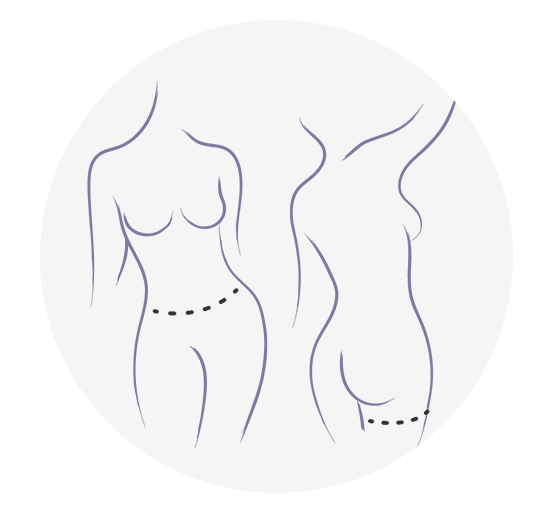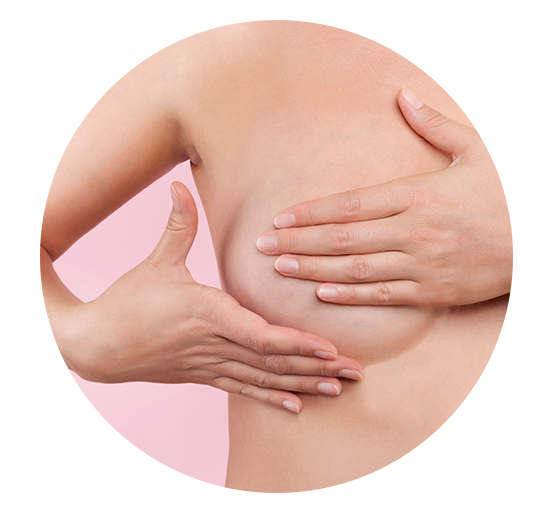This is restricted due to surgical images.
Tripedicled Extended Abdominal Perforator Flap
Presentation by Dr. Joshua L. Levine
This is restricted due to surgical images.
Tripedicled Extended Abdominal Perforator Flap
Hello. I’m Dr. Joshua Levine from New York City. I’m a reconstructive microsurgeon. I do perforator flap breast reconstruction. This is a paper that was accepted for presentation at our annual meeting in 2018 and it’s entitled the “Tripedicled Extended Abdominal Perforator Flap, a reliable option for low-body-weight patients requiring large autologous bilateral breast reconstruction.” It’s a very advanced topic in breast reconstruction, but I’m making it available because I think that in explaining the concept it elucidates some very, very important basic concepts about autologous breast reconstruction.
Tripedicled Extended Abdominal Perforator Flap | Background About Autologous Breast Reconstruction
So, let me give you a little bit of background. Autologous breast reconstruction is the standard of care for patients who have had mastectomy and would like breast reconstruction. It means that the patient’s own body tissue is used as opposed to the use of implants to reconstruction breasts.
When we take tissue from anywhere on the patient to transplant to the chest, the area that we take it from we call the donor site, and the donor site has to be ample and has to be enough volume of tissue in order to reconstruction a breast, or two breasts in the case of a bilateral, and it also has to be well-perfused. In other words, there have to be high-quality blood vessels flowing through that tissue. Once we identify the area and we identify the blood vessels, then we can take the volume of tissue, the skin and the fat, and the blood vessel, without sacrificing the underlying muscle, and these operations are called perforator flaps. They’re very common and they are the standard of care for breast reconstruction.
However, when you’re faced with a situation in which you have a large volume requirement, for example, a patient with large breast or breasts, and particularly in the case of breasts, meaning bilateral, meaning both sides are being removed, either for cancer or for prophylactic purposes, then there’s a large volume of requirement and we need to get that tissue from the donor site and we need to make sure that it’s very well-perfused with blood, and this is a true particularly in thin patients who don’t have a lot of volume at the abdomen. So, we’ve done a lot of creative things to improve or increase the amount of volume that we can get either from the abdominal donor site or from other donor sites, and we’ve combined flaps, various flaps from various parts on the body.
But, the bottom line is and the concept that needs to be kept in mind is that whatever tissue is removed from the donor site it has to be very well-perfused, meaning it has to have a good blood supply. And so, if we use the standard DIEP pedicle or blood vessel which comes in around the belly button, it can only perfuse a certain amount – limited amount. If we want to extend the flap further out towards the side or even around towards the back or lumbar area, we really do need to worry about having to get more blood into that tissue and out of the tissue, goes in through the artery and out through the vein
So, the way that we’ve done this in the past is by adding more blood vessels, and in adding another blood vessel to a half of an abdominal flap for one breast reconstruction, or hemiabdominal flap for unilateral breast reconstruction, we’ve called that in the past and we’ve written and published on this the SHaEP flap, which stands for stacked hemiabdominal extended perforator flap, and I have videos on this topic alone on my YouTube channel. The idea is that extending the flap, we take another secondary blood vessel so that we can extend the abdominal perforator flap, and then we take that flap even though it’s contiguous and we fold it in such a way that it’s sort of stacked on itself. So, we call that a stacked bipedicle DIEP. We’ve done this in the past very, very frequently for unilateral breast reconstruction, just taking both halves of the abdomen, the hemiabdomen, two of them still together, each side having its own blood supply. We plug both of those blood vessels in in the chest, and we have a stacked DIEP for unilateral, the idea being that the more volume we have the better result we can achieve.
Tripedicled Extended Abdominal Perforator Flap | The First Procedure
This was a presentation of the first ever tripedicle or three-blood-vessel flap for breast reconstruction, and we did it in bilateral cases in three patients. The idea was taking the SHaEP flap or the stacked hemiabdominal extended perforator flap and taking it out even further and then including some of the lumbar fat around the back, but in order to do that we do need to find one extra blood vessel. And so, we call that the tripedicled extended abdominal perforator flap or the TEAP or TEAP flap. So, these are the first few cases that we’ve done of this operation.
This is a picture of a circumferential abdominal trunk body lift, and this is an operation that’s done very commonly by cosmetic surgeons. The idea is that when you use a DIEP, a standard DIEP, and you’re taking just the anterior abdominal tissue, the skin and fat that hangs around the belly button, there often is more that continues around towards the hip and even towards the back that we don’t typically take with a DIEP precisely because it wouldn’t have enough blood supply. But, the tissue is there and we know it’s there. We can see it. This is a common operation, the circumferential body lift. So, this is an idea that we came up with in order to utilize that tissue, which is not really doing the patient any good in its position and, in fact, is removed for cosmetic purposes in many cases anyway.
The picture here on the right is the flap turned over after it’s harvested, and this is the main pedicle, the trunk of the DIEP pedicle coming in and being plugged into two additional pedicles further out in the flap in order to perfuse better. These two blood vessels can be anything, any blood vessel that you find. The most common one that we used was the deep circumflex, DCIA, but we also used superficial inferior epigastric, lumbar artery perforator, superficial circumflex. And so, there are a lot of different options. Whatever you find, basically, can be used.
Here’s another example of where that main pedicle is plugged into secondary and tertiary pedicles, and then here we have the flap brought up to the chest and then plugged in. And so, it’s being perfused now through the main DIEP, which would perfuse this part, and then those other two blood vessels here are perfusing the more distal or lateral part of the flap.
Each one of these flaps has two intraflap anastomoses of blood vessels, which is actually four blood vessels because each one has an artery and a vein, and all of those anastomoses or blood vessel connections are done under the microscope on a back table with a coupler. And so, we have four connections of tiny blood vessels before we even get the flap up to the chest, and then the microsurgery under the chest is done in a standard fashion as you would any ordinary DIEP.
So, we did this in five different flaps. It was three different patients—two of them were bilaterals, one was unilateral—and we used a variety of different flap pedicle combinations and they all worked. Each flap had six anastomoses, four intraflap anastomoses and then the two that go into the internal mammaries as standard DIEPs, and we had no failures. Interestingly and sort of predictably, we also had no fat necrosis because these are incredibly well-perfused flaps.
It didn’t add much time, and this is something that comes with experience. And so, time should not be a reason not to do this.
Here is the result. I mean, it’s a really, really powerful tool. As you can see, this is a very thin woman who had bilateral breast reconstruction. The cancer was on her left, so she had nipple-sparing prophylactic mastectomy on the right, skin-sparing mastectomy on the left, and that’s a reconstructed nipple on the left, and each one of these breasts was reconstructed with a tripedicle or TEAP flap.
The conclusion is that it’s very reliable in large-breasted women with limited abdominal donor site to donate, and it’s a great option for autologous reconstruction in patients who are challenging due to their body habitus. And so, that is the TEAP flap.
I would like to add to this presentation that we really have learned how to do this now without adding the extra pedicles, and we call that the abdominal delay, which allows us to extend the abdominal flap based on the one DIEP pedicle. But, it requires a small preemptive operation that comes one week prior to the flap transfer, and we call that the surgical delay or the delay phenomenon or the abdominal delay or the delayed DIEP. But, it’s a wonderful new tool that we have in our armamentarium to provide these operations to anybody even without the extra surgery and the extra blood vessel dissections, so without the extra time and surgery.
So, again, complicated topic but a lot of interesting concepts were covered, and so I hope this was helpful to you. I’d encourage you if you were interested in the DIEP and the delay, I have another video that specifically deals with the delay phenomenon on my YouTube channel. Thank you very much.





